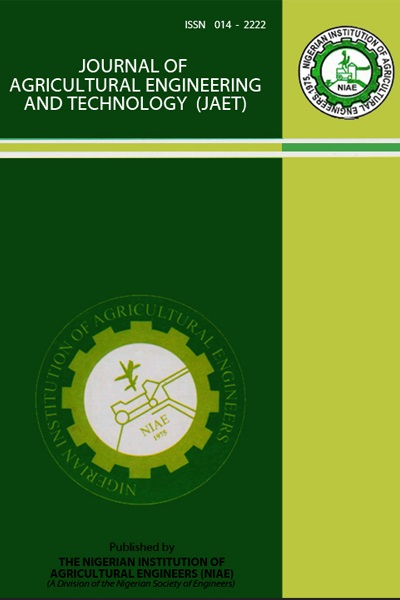PERFORMANCE EVALUATION OF A MULTI-LAYER SOLAR TENT DRYER USING SHEA NUT
Keywords:
Cracking efficiency, drying rate, kernel breakage, sensory evaluation, shea kernelAbstract
Solar dryers are developed to improve food safety and efficiency of solar drying at minimal cost. The application of any new design of solar dryer to crop drying requires adequate performance evaluation to guarantee food hygiene and cost effectiveness of the application. A newly developed multi-layer solar tent dryer by Nigerian Stored Products Research Institute was evaluated using shea nut. The evaluation was aimed at bringing out the effect of different layers on quality of shea nut and kernel as well as drying parameters. The parameters considered for the evaluation were; drying rate, cracking efficiency, percentage kernel breakage, moisture content, proximate compositions, microbial loads and sensory assessment. The obtained data were subjected to statistical analysis using SPSS 20.0 version. New Duncan’s Multiple Range Test was adopted to separate the means (P < 0.05). The results
showed that the drying operation took 19 days to reduce the moisture content of boiled nut dried in the solar tent dryer from 72.1 ± 0.2 %db to 12.90 ± 1.60, 15.26 ± 2.36 and 15.76 ± 1.12 %db on layer 1 (top trays), layer 2 (middle trays) and layer 3 (bottom trays) respectively, while the control sample (sun drying) was reduced to 13.80 ± 1.50 %db. The average temperature recorded on layers 1, 2 and 3 were 47.0 ± 6.4, 38.4 ± 5.6 and 32.6 ± 2.6 °C respectively, while the control had 30.5 ± 2.1 °C. The highest drying rate of 0.90 kg/day was recorded for nut dried on layer 1 while layers 2 and 3, and control recorded 0.76, 0.73 and 0.74 kg/day respectively. The cracking efficiencies of nuts dried on layers 1 to 3 were 98.9, 99.0, 97.9% respectively, while control was 94.7%. Percentage kernel breakage of 5.68, 2.72, 2.28 and 1.73% were recorded in samples dried on layers 1 to 3 and control respectively. The proximate compositions of the dried shea kernel were not negatively impacted by the drying operation. The layer 3 recorded the highest microbial loads and was significantly different from others (P < 0.05). Therefore, the solar tent dryer could be used for drying of shea nut and kernel without quality loss in the product, but the loading should be limited to two layers for efficient quality maintenance.


